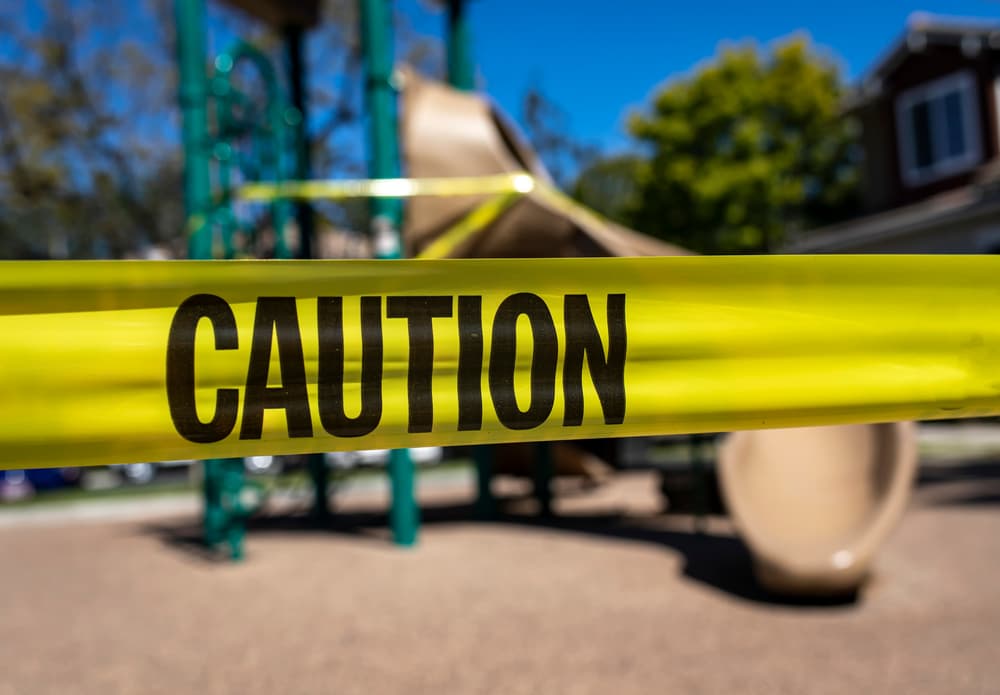You are home now, away from the chaos of the accident scene. The initial shock is wearing off, and the reality of the situation is setting in. Your body aches in places you did not know it could, your car is damaged, and your mind is racing with questions.
Then, the phone rings. It is an insurance adjuster, and they want to talk. One question rises above all others: how does an insurance company decide who was at fault?
The answer is not as simple as you might think, and their process is built around protecting their own interests, not yours. Their determination of fault directly impacts the compensation you might receive for your medical bills, lost wages, and pain.
The Insurance Adjuster’s Method: How They Decide Who Was at Fault

After an accident on a busy stretch of I-35 in Austin or a quiet street in Temple, the other driver’s insurance company assigns a claims adjuster to your case. The adjuster's job is to investigate the claim and determine how much, if anything, the insurance company has to pay.
They are trained to manage the company's financial exposure, which means their goal is to minimize the amount paid out on claims. The adjuster gathers information to piece together their version of the accident, which typically includes a few key items.
- The Police Report: The adjuster will get a copy of the official accident report filed by the police officer at the scene. This report contains the officer’s initial observations, a diagram of the accident, and sometimes, the officer's opinion on who violated a traffic law. However, the officer's opinion is not the final word on legal fault. They were not a witness to the crash and are forming a conclusion based on limited evidence gathered moments after a traumatic event.
- Your Recorded Statement: The adjuster will almost always ask you to provide a recorded statement about what happened. They present this as a simple formality. They may ask seemingly innocent questions about your day, how you were feeling, or what you were doing right before the crash. These questions are designed to get you to say something that they can later use to assign partial or total fault to you.
- Vehicle and Scene Evidence: They will look at photos of the vehicle damage and the accident scene. An adjuster might use the location of the damage, for example, on the front versus the side of a car, to make a quick judgment about who hit whom. This analysis is often superficial and may not account for the complex physics of a high-speed collision.
The adjuster’s investigation is focused on finding reasons to deny your claim or reduce its value. They are not on your side, and their assessment of fault reflects that reality.
Texas At-Fault Laws and How They Affect Your Claim
Texas is an "at-fault" state, also known as a tort liability state. This legal term means the person who caused the accident is responsible for paying for the damages.
This seems straightforward, but it gets complicated when more than one person shares the blame. Texas law has a specific rule for these situations called "proportionate responsibility," or sometimes called modified comparative fault.
This rule states that you can recover damages from another driver only if you are 50 percent or less at fault for the accident. If you are found to be 51 percent or more at fault, you are barred from recovering any money.
This is the 51% bar rule.
- If you are found 0% at fault, you can recover 100% of your damages.
- If you are found 20% at fault, your total compensation will be reduced by 20%. For example, if your damages are $100,000, you would receive $80,000.
- If you are found 51% at fault, you receive $0. Nothing.
Because of this 51% bar, insurance adjusters have a powerful incentive to shift as much blame as possible onto you. If they can push your percentage of fault from 49% to 51%, their company's responsibility to pay drops from a significant amount to zero. This is why their determination of who was at fault is so aggressive and why you need someone fighting just as hard for your side of the story.
Why Your Lawyer Investigates Fault Differently
While an insurance adjuster works for a corporation, a personal injury lawyer works for you and only you. Their investigation into fault is not about finding the cheapest way to close a file. It is about uncovering the truth and building the strongest possible case to show why the other party is responsible for the harm you have suffered. This means going much deeper than the adjuster’s surface-level review.
A legal team’s independent investigation is comprehensive and tailored to your specific accident, whether it happened near the Magnolia Market in Waco or on a rural road in the Hill Country.
Their process includes steps the insurance company often skips:
- Preserving Critical Evidence: A lawyer will immediately send a spoliation letter to the other driver and their insurance company. A spoliation letter is a formal legal notice demanding that they preserve all evidence related to the case, such as the damaged vehicle, its "black box" data recorder, and any photos or documents. This prevents them from "losing" or destroying evidence that could prove your case.
- Conducting a Deeper Investigation: Lawyers often work with their own investigators and accident reconstructionists. These professionals can visit the scene, take precise measurements, analyze vehicle damage with greater detail, and create scientific models of how the crash occurred. This is far more detailed than an adjuster looking at a few photos.
- Finding All Responsible Parties: Sometimes, it is not just the other driver who is at fault. Was the driver working for a company at the time? Did a faulty traffic light or a dangerous road condition contribute to the crash? A lawyer investigates to identify every single person or entity that shares responsibility for your injuries, which is a key part of maximizing your potential recovery.
Gathering Evidence Beyond the Obvious
An attorney knows that the most powerful evidence is often hidden. An adjuster might be content with a police report, but a legal team digs for more. They know how to uncover facts the insurance company would rather ignore.
A thorough legal investigation may involve:
- Subpoenaing Records: A subpoena is a formal court order demanding that a person or entity turn over specific documents. A lawyer can subpoena the other driver's cell phone records to see if they were texting at the time of the crash. They can also subpoena vehicle maintenance records or a commercial driver's logbooks.
- Locating Surveillance Footage: Many businesses, from gas stations in Killeen to storefronts on South Congress in Austin, have security cameras. A lawyer's team will quickly canvas the area around an accident to find and secure video footage that might have captured the entire event before it is erased.
- Accessing Black Box Data: Most modern cars and all commercial trucks have an Event Data Recorder (EDR), similar to an airplane's black box. This device records data like vehicle speed, braking, and steering in the seconds before a crash. This data provides an unbiased, second-by-second account of what happened and is often a key piece of evidence in determining fault.
Speaking to Witnesses
The insurance adjuster may call a witness listed on the police report. However, their questions are often limited and designed to get quick, simple answers. A lawyer's approach is different.

An investigation for a personal injury claim involves a more strategic approach to witnesses.
- Finding Unlisted Witnesses: Investigators may return to the scene to find people who saw what happened but did not speak to the police
- Asking the Right Questions: A lawyer or their investigator knows what questions to ask to establish negligence.
- Getting Formal, Sworn Statements: Instead of an informal phone call, a lawyer may take a formal, written, and sworn statement from a witness, called an affidavit.
Common Tactics Insurance Companies Use to Shift Blame
Be aware of some common tactics they use to achieve this goal. Their job is to protect their company, and these methods are tools they use to do it.
You might encounter these approaches when dealing with an adjuster:
- Misinterpreting Your Words: During a recorded statement, an adjuster might ask, "How are you doing today?" A polite "I'm fine, thank you" could be noted in the file as "Victim stated they were fine," and used later to argue your injuries are not severe.
- The Quick, Low Offer: If liability insurance seems clear on their driver, the adjuster may offer you a small check very quickly. This may seem like a relief, but it comes with a catch.
- Blaming Pre-existing Conditions: If you mention any prior injury or medical condition, even one that was fully healed, the adjuster may try to argue that your current pain is from the old condition, not from the crash.
Taking the Next Step for Your Peace of Mind
The question of "how does an insurance company decide who was at fault?" has a clear answer: they decide in a way that best serves their financial interests. Their investigation, interpretation of Texas law, and tactics are designed to pay you as little as possible.
The insurance company's determination of fault is not the final word. You have the right to conduct your investigation and present your case, based on evidence gathered by a team that works only for you.
Having a dedicated legal advocate on your side levels the playing field. While the insurance company has a team of adjusters and lawyers working to protect its profits, you deserve someone fighting just as hard to protect your rights and future.

If you are exasperated with calls from insurance adjusters after a car, truck, or motorcycle accident, you do not have to handle it alone. The team at Lorenz & Lorenz, PLLC, is here to listen to your story and explain your options.
- A consultation allows you to understand your legal rights.
- You can get answers to your specific questions in a confidential setting.
- You learn how a legal team can take over communication with the insurance companies, giving you the space to focus on your recovery.
Contact Lorenz & Lorenz, PLLC, at (512) 477-7333 in Austin or (254) 662-4800 in Waco for a free and confidential case evaluation.
Frequently Asked Questions About Fault in Texas Accidents
What if the police report says I was at fault?
Even if the police report places you at fault, the case is not over. An officer's opinion on a report is not admissible in court as a final determination of fault. A thorough legal investigation can often uncover evidence that contradicts the report and shows what really happened.
Should I give a recorded statement to the other driver’s insurance company?
It is generally not in your best interest to give a recorded statement to the at-fault party's insurance adjuster without first speaking to a lawyer. Adjusters are trained to ask questions that can be easily twisted or taken out of context to hurt your claim. Your lawyer can handle all communications with the insurance company for you.
How long do I have to file a personal injury lawsuit in Texas?
In Texas, the time limit for filing a personal injury lawsuit is generally two years from the date of the accident. This deadline is known as the Statute of Limitations. If you miss this deadline, you will likely lose your right to seek compensation forever.
Can I still get compensation if I was partially at fault for the accident?
Yes, as long as your share of the fault is 50 percent or less. This is because of Texas's proportionate responsibility rule. Your potential compensation would be reduced by your percentage of fault.